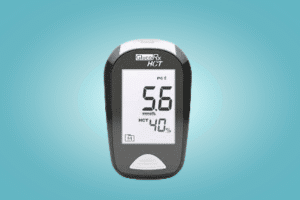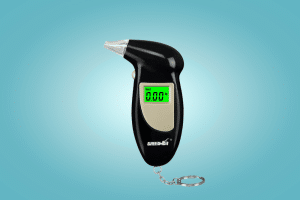Are you embarking on a ketogenic diet journey to shed those extra pounds, improve your overall health, or simply feel more energised? If so, you might have heard about the importance of achieving and maintaining a state of ketosis. But how can you be sure that your efforts are paying off and that you’re truly in ketosis? Enter keto strips – your reliable companion in navigating the keto landscape. In this ultimate guide, we’ll dive deep into keto strips, exploring their types, how to use them effectively, and how they can help you optimise your keto diet results.
Understanding Ketosis
Before we delve into the intricacies of keto strips, let’s take a moment to understand what ketosis is and why it matters. Ketosis is a metabolic state in which your body shifts from burning glucose (from carbohydrates) for energy to burning fat instead. When you significantly reduce your carbohydrate intake, your body enters ketosis, producing ketones as an alternative fuel source. Being in ketosis offers numerous benefits, such as enhanced fat loss, improved mental clarity, and increased energy levels.
To gain a more comprehensive understanding of ketosis, its benefits, and how to achieve it, we recommend reading our in-depth article on Unlocking Ketosis: The Ultimate Guide to Benefits, Science, and Beyond.
Types of Keto Strips
Now that you grasp the importance of ketosis, let’s explore the different types of keto strips available to help you monitor your ketone levels.
1. Urine Ketone Strips

Urine ketone strips are the most affordable and readily available option for measuring ketosis. These strips work by detecting the presence of acetoacetate, one of the ketone bodies, in your urine. To use them, simply dip the strip into a urine sample and compare the colour change to the provided chart. While urine strips are convenient, they can be less accurate as you become more adapted to ketosis, and factors like hydration levels can affect the results.
2. Blood Ketone Meters

Blood ketone meters are the most accurate way to measure your ketone levels. These devices require a small drop of blood, usually obtained by pricking your finger, which is then analysed to determine the concentration of beta-hydroxybutyrate (BHB) in your bloodstream. Although more expensive than urine strips, blood ketone meters provide a precise snapshot of your ketosis state.
3. Breath Ketone Analysers

Breath ketone analysers are a non-invasive option that measures the presence of acetone, another ketone body, in your breath. These devices are portable and easy to use, requiring you to simply breathe into the analyser. While not as widely available as urine strips or blood ketone meters, breath analysers offer a convenient and painless way to monitor your ketosis progress.
How to Use Keto Strips

Using keto strips is a straightforward process, but there are a few key points to keep in mind to ensure accurate results.
1. Urine Ketone Strips
➤ When to test: The best time to test your urine for ketones is in the morning or evening, before eating or drinking anything.
➤ How to test: Dip the strip into a urine sample for a few seconds, then remove and wait for the colour to change according to the manufacturer’s instructions.
➤ Interpreting results: Compare the strip’s colour to the provided chart to determine your ketone levels. Keep in mind that as you become more adapted to ketosis, your body may produce fewer excess ketones, leading to lower readings on urine strips.
2. Blood Ketone Meters
➤ When to test: Aim to measure your blood ketone levels simultaneously each day, preferably in the morning before eating or drinking.
➤ How to test: Follow the device’s instructions for obtaining and placing a blood sample on the test strip. The meter will display your ketone levels within seconds.
➤ Interpreting results: A reading of 0.5 mmol/L or higher generally indicates that you are in nutritional ketosis. Aim for a range between 0.5 and 3.0 mmol/L for optimal results.
3. Breath Ketone Analysers
➤ When to test: As with blood ketone meters, try to test at the same time each day, preferably in the morning before consuming anything.
➤ How to test: Follow the device’s instructions for breathing into the analyser. Some devices may require multiple breaths for an accurate reading.
➤ Interpreting results: Breath ketone analysers typically display parts per million (PPM) results. A reading of 2 PPM or higher usually indicates that you are in nutritional ketosis.
Factors Affecting Keto Strips Accuracy

While keto strips are valuable tools for monitoring your ketosis progress, several factors can influence their accuracy:
- Hydration levels: Drinking more water can dilute your urine, lowering ketone readings on urine strips.
- Time of day: Your ketone levels may fluctuate throughout the day, so it’s essential to test consistently for more accurate comparisons.
- Duration of being in ketosis: As your body becomes more efficient at using ketones, you may excrete fewer excess ketones, resulting in lower readings on urine strips.
- Individual metabolism: Everyone’s body responds differently to the ketogenic diet, so your optimal ketone levels may vary from others.
- Medications and supplements: Certain medications and supplements can affect ketone production and, consequently, the accuracy of keto strip readings.
Optimising Your Keto Diet with Keto Strips
Keto strips are not just for confirming that you’re in ketosis; they can also help you optimise your ketogenic diet for better results.
- Setting Ketosis Goals: Use your keto strip readings to set personalised ketosis goals. For example, if you aim for weight loss, you may target a higher ketone level (1.5-3.0 mmol/L on a blood ketone meter) to encourage more fat burning.
- Adjusting Macronutrients Based on Ketone Levels: You may need to adjust your macronutrient ratios if your ketone levels are consistently low. Consider reducing your carbohydrate intake further or increasing your healthy fat consumption to promote ketosis.
- Tracking Progress Over Time: Keep a log of your ketone levels alongside other health metrics, such as weight, body composition, and energy levels. This will help you identify patterns and adjust your keto diet plan.
- Combining Keto Strips with Other Measurements: While keto strips are valuable tools, they should be used with other health markers for a more comprehensive understanding of your progress. Consider tracking your weight, body measurements, and subjective factors like mood and energy levels to gain a holistic view of your keto journey.
Common Mistakes and Misconceptions

Despite the usefulness of keto strips, there are some common mistakes and misconceptions to be aware of:
Overreliance on keto strips: While helpful, they should not be the sole determinant of your keto diet success. Focus on your feelings, energy levels, and other health markers.
- Misinterpreting results: Remember that factors like hydration and individual metabolism can affect keto strip readings. Don’t get discouraged by temporary fluctuations or lower readings as you become more adapted to ketosis.
- Not using keto strips consistently: To gain meaningful insights, it’s crucial to use them regularly and consistently. Sporadic testing may lead to inaccurate conclusions about your ketosis progress.
- Ignoring other factors affecting ketosis: Remember that keto strips are just one piece of the puzzle. Pay attention to your diet, exercise routine, sleep habits, and stress levels, as these can all impact your ability to achieve and maintain ketosis.
Conclusion
Keto strips are a game-changer for anyone serious about mastering the ketogenic diet. By providing a window into your ketone levels, these tools empower you to make informed decisions, adjust your approach, and optimise your results. Whether you choose urine strips, blood ketone meters, or breath analysers, the key is to use them consistently and in combination with other health markers.
Remember, the path to ketosis is not always linear, and individual responses may vary. If you encounter challenges or have concerns about your keto diet, don’t hesitate to seek guidance from a healthcare professional or a qualified nutrition expert.




